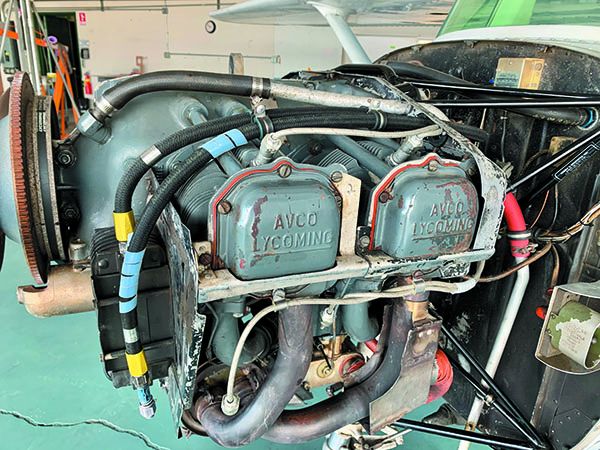Piston-powered airplanes aren’t exactly free of vibration and that beats the heck out of exhaust systems. That means that between-annual inspections are important, especially if you think the system was subjected to unusual punishment. Ever pull the mixture back for shutdown and the backfire sounded like a shotgun? That could have done some damage to the exhaust system’s welds and baffling, so you better get a look at both the carb and the pipes. Or the stubborn hot start that made a pretty good pop out the muffler when the engine finally lit. But there is regular exhaust system wear and tear that happens we’ll before TBO under even the most conscientious and normal engine operation—what could possibly go wrong?
THEY’LL LAST HOW LONG?
No nearly as long as you think. Pretty much forget most of what you know about automotive exhaust systems. Aircraft exhaust components live different lives. Just about every mechanic we talk with agrees that many aircraft exhaust systems won’t make it to the engine’s TBO. Fly a turbo? You’ll likely be replacing exhaust components more frequently, as the term “torching” is one you’ll hear frequently around shop floors.
Then there’s the pilot factor. Run the engine temps and pressure on the side of scorching hot, and components could fail sooner. Heat and pressure are the enemy. In fact there are so many enemies, the FAA publishes an Advisory Circular (AC 91-59A) on the topic, which in part outlines common failures related to CO poisoning, partial or complete engine power loss and fire. Progressive inspection is the best defense. With the latest maintenance manuals (and shop light, hinge-handle mirror and magnifier in hand), work forward or backward through the system, it doesn’t really matter.
INSPECT OFTEN
Harmful exhaust gas ultimately gets into the cabin through the heat exchange system, which is why muffler health goes beyond keeping things quiet. But problems with exhaust plumbing go deeper than the muffler, and you can tell a lot by a good visual inspection if you know what you’re looking for. The FAA’s updated AC lays out most of the telltale symptoms you can spot by eye, including exhaust leakage. This includes a flat gray, gray-white or light gray powder or a sooty appearance. Then there are structural failures, include warping, deformation, thinning, collapse, dents, cracking, tears, separation, scaling, weld separation, discoloration, corrosion, metal pitting or burn-through on the components. Pinhole-size damage is often unnoticed and only gets worse.
During an inspection, you’ll want to pay particular attention to bends in the system, and signs of leakage can often be spotted around flex-joints, slip-joints, couplings and under clamps. If the engine has an aftermarket engine monitor installed, there may be new drill holes made for the probe installation and we’ve seen some fail through stress cracking.
Then there is heat corrosion. The muffler’s end plates (inlet and outlet ports) are areas to get a close look at. If corrosion is worsening in this area, swelling can occur off the normal surface line of the muffler at either end. Look into the interior of the tailpipe for loose or displaced baffles, cones or diffusers in the mufflers. On airplanes that have a bend in the tailpipe, it’s suggested to remove the tailpipe at least as often as the annual inspection to check the interior of the muffler. But some internal wear and damage is almost impossible to detect without a borescope, and for some simple exhaust systems where there are other obvious signs of excessive wear, it’s often better to simply shotgun the major components.
And even if you don’t put a lot of hours on the aircraft, the exhaust can still wear prematurely. Ones that are parked in humid climates could be more at risk, and carbon steel components (as opposed to stainless) are obviously more susceptible to corrosion.
Simple upkeep can go a long way, and it starts by using new hardware (gaskets, bolts, clamps) during installation, while regularly re-torquing fasteners to the proper specs. If you’re new to turbocharging, expect good shops to pay extra attention to the exhaust at frequent intervals. For more exhaust care tips, read the exhaust upkeep article in the February 2019 Aviation Consumer.





